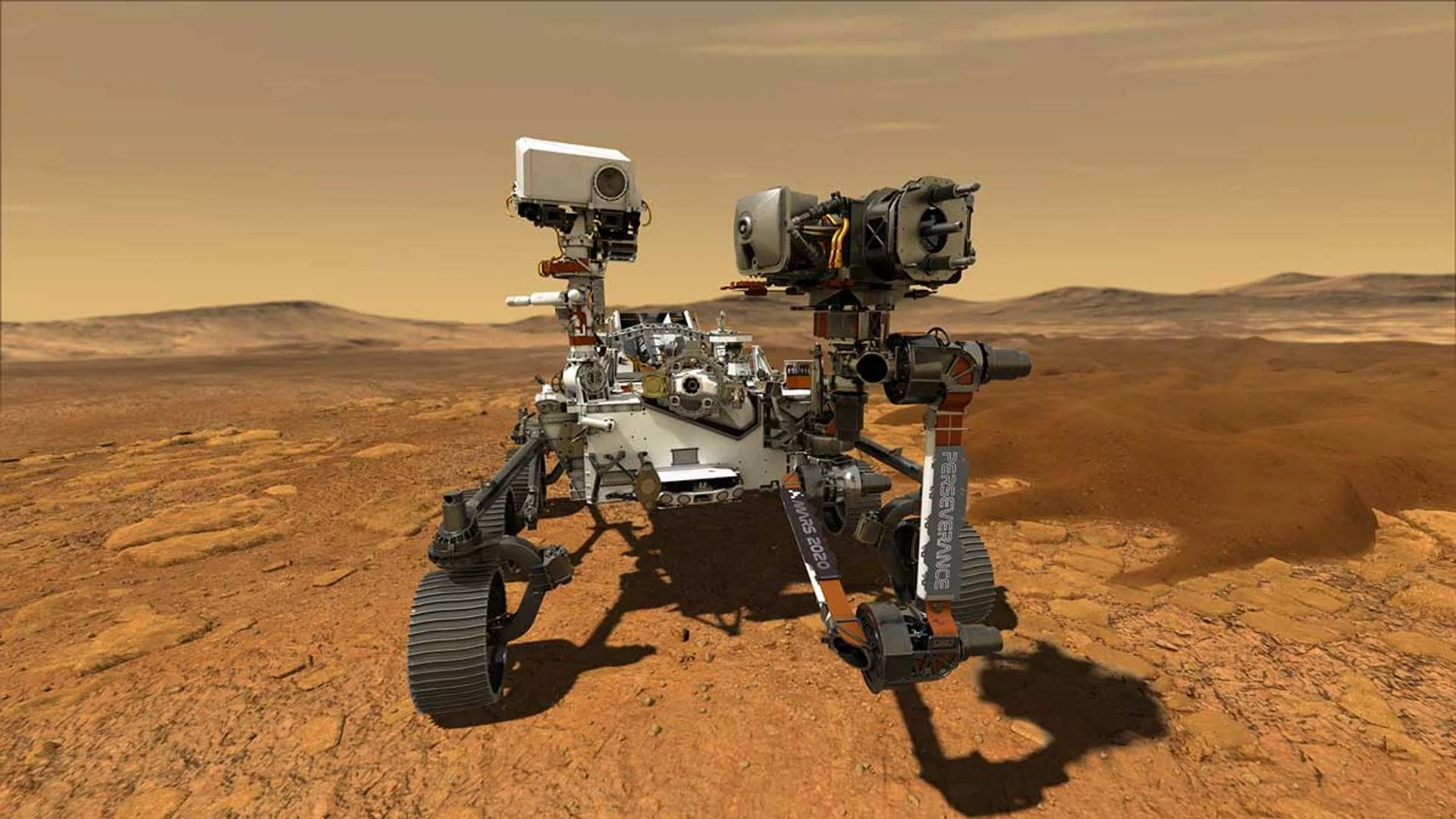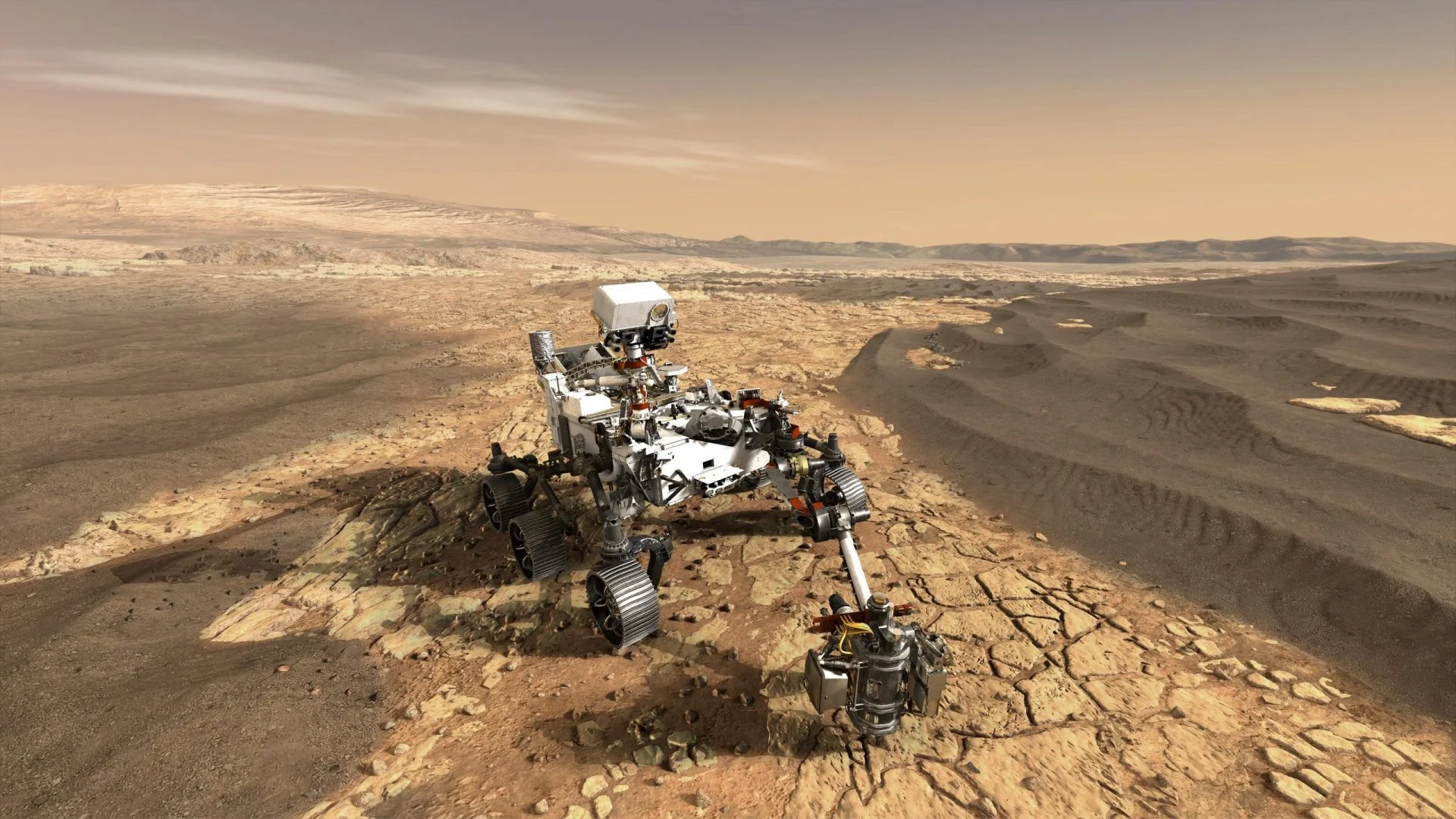Scientists has discovered how sound propagates on Mars

NASA's Perseverance rover has become the first device to hear the Red Planet. Using the SuperCam microphones installed on the rover, it was possible to record the sounds that were heard there.
These data became the basis for studying how sound propagates in the atmosphere of Mars, and calculating its speed, which, as it turned out, depends on the diapason. The team of scientists announced their findings in a preliminary publication of the article prepared for the journal Nature.

Sylvester Maurice, who is the scientific co-leader of the SuperCam project, said that he was able to record the noise of the vertical winds and propellers of the Ingenuity helicopter, as well as the strikes that the laser of the NASA Perseverance rover makes on rocks to study their composition. In general, studies indicate that Mars is quiet enough.
Due to the fact that the localization of the sound source (2-5 meters from the target) and the time when the laser fired were precisely known, it was possible to calculate the speed at which Martian sounds propagate. It is 240 meters per second, which is lower than the Earth's 340 m/s indicators. This is due to the composition of the Red Planet's atmosphere, which contains 95% CO2 (0.04% on Earth). Its density is 100 times less than that of the earth, so the Martian sound is weaker.

Surprising is the fact that the speed of the laser sound is 250 meters per second, that is, it is 10 meters faster than the buzz of a helicopter. For our planet, such calculations can be called erroneous, because earth sounds propagate at only one speed. However, on Mars there is a correlation between the speed of sound and its frequency: high sounds propagate faster than low sounds, creating a delay effect even if they have the same source. Therefore, the speed of propagation of the buzz of a helicopter is less than that of a laser shot, which confirms a unique property of low-pressure carbon dioxide.
Research says of low audibility on Mars. The discovered facts would make it difficult for two interlocutors to talk close to each other if people had the opportunity to stand on Mars. The rarefied atmosphere contributes to the fact that the sound begins to fade already at the distance of 4 m. For the earth, this figure is 65 m.
Perseverance was used to record vertical winds. Listening to them will allow in the future to predict the climate on Mars more accurately. The sounds of turbulence will become the basis for research into other atmospheres that are similar in characteristics to Martian and Venus. It is also possible that missions to Venus or Titan will also be equipped with microphones.
These data became the basis for studying how sound propagates in the atmosphere of Mars, and calculating its speed, which, as it turned out, depends on the diapason. The team of scientists announced their findings in a preliminary publication of the article prepared for the journal Nature.
Before Perseverance landed on Mars, its acoustic environment had not been unknown. Further analysis of the 5-hour recording showed that there is an unknown turbulence here.

Sylvester Maurice, who is the scientific co-leader of the SuperCam project, said that he was able to record the noise of the vertical winds and propellers of the Ingenuity helicopter, as well as the strikes that the laser of the NASA Perseverance rover makes on rocks to study their composition. In general, studies indicate that Mars is quiet enough.
Due to the fact that the localization of the sound source (2-5 meters from the target) and the time when the laser fired were precisely known, it was possible to calculate the speed at which Martian sounds propagate. It is 240 meters per second, which is lower than the Earth's 340 m/s indicators. This is due to the composition of the Red Planet's atmosphere, which contains 95% CO2 (0.04% on Earth). Its density is 100 times less than that of the earth, so the Martian sound is weaker.

Surprising is the fact that the speed of the laser sound is 250 meters per second, that is, it is 10 meters faster than the buzz of a helicopter. For our planet, such calculations can be called erroneous, because earth sounds propagate at only one speed. However, on Mars there is a correlation between the speed of sound and its frequency: high sounds propagate faster than low sounds, creating a delay effect even if they have the same source. Therefore, the speed of propagation of the buzz of a helicopter is less than that of a laser shot, which confirms a unique property of low-pressure carbon dioxide.
Research says of low audibility on Mars. The discovered facts would make it difficult for two interlocutors to talk close to each other if people had the opportunity to stand on Mars. The rarefied atmosphere contributes to the fact that the sound begins to fade already at the distance of 4 m. For the earth, this figure is 65 m.
Perseverance was used to record vertical winds. Listening to them will allow in the future to predict the climate on Mars more accurately. The sounds of turbulence will become the basis for research into other atmospheres that are similar in characteristics to Martian and Venus. It is also possible that missions to Venus or Titan will also be equipped with microphones.
Comments: 1